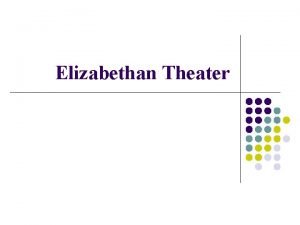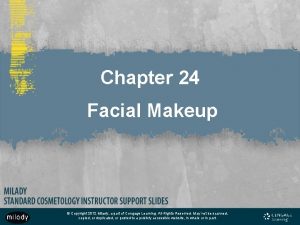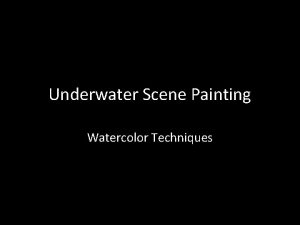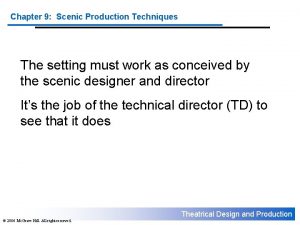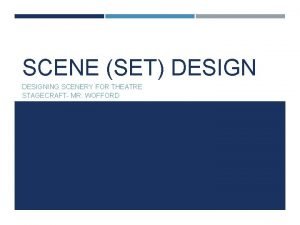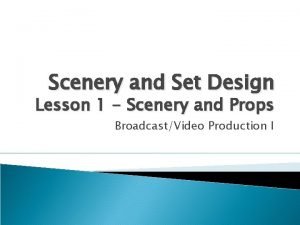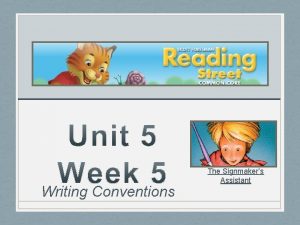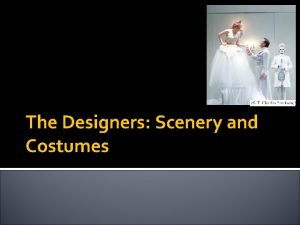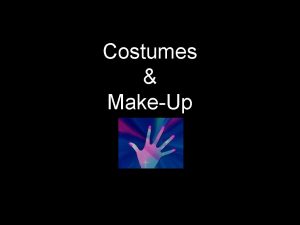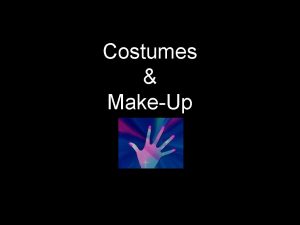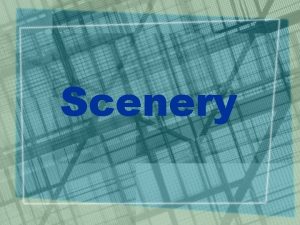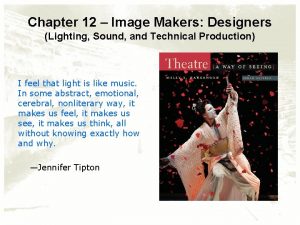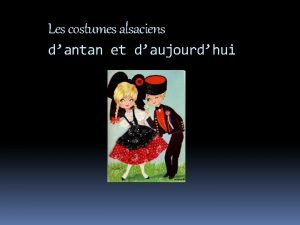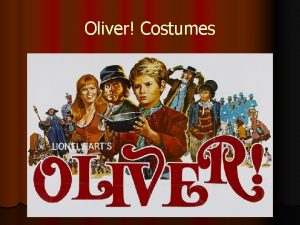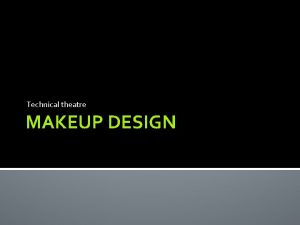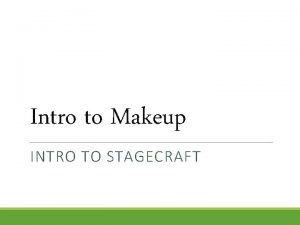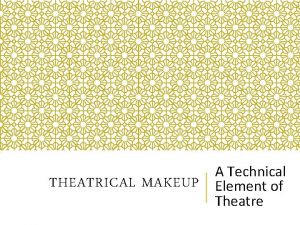Chapter 11 Image Makers Designers Scenery Costumes Makeup
















- Slides: 16

Chapter 11 – Image Makers: Designers (Scenery, Costumes, Makeup, Masks, Wigs, and Hair) Stage-designing should be addressed to [the] eye of the mind. There is an outer eye that observes, and there is an inner eye that sees. Jones —Robert Edmond

Chapter Summary • Designers of theatrical sets, costumes, masks, puppets, hair, and wigs realize the production in visual terms. • They are visual artists who transform space and materials into an imaginative world for actors engaged in human action.

The Scene Designer • Background: – Scenic artist (19 th century): • Painted large scenic backdrops – Scene (or set) designer: • Rise of realism and naturalistic theatre created demand for more complex sets. • Sets required to look like what they represent.

The Scene Designer Courtesy Arena Stage • Early 20 th century innovators: – Adolphe Appia – Edward Gordon Craig • Reinterpreted function of set and set design: – Create mood – Open stage up for movement – Unify visual ideas • Moved beyond illusion of stage realism: – Stage can be expressive Ming Cho Lee’s Design for K 2

Scene Design as Visual Storytelling • Designer as detective: – Uncovers visual clues that reveal inner life of play • Approaches: – Begins with script analysis: • Literary (theme, mood, setting, etc. ) • Practical (entrances, exits, properties, etc. ) – Creates sketches, models – Works with director to decide on look, details – Designer’s plans given to production manager, technical director, shop foreman

Scene Designer Spotlight • Adolphe Appia (1862 -1928): – Considered unity to be the basic goal of theatrical production – Disliked contradiction of three-dimensional actor and flat backdrop – Used ramps, steps, platforms to give depth – Role of lighting to fuse visual elements into whole

Bruce Goldstein/Courtesy Guthrie Theatre The Costume Designer Patricia Zipprodt’s Costumes for Molière’s Don Juan • Costume: – All garments and accessories, wigs, makeup, and masks – Tells us about characters: • Social position, economic status, occupation, etc. • Relationship of characters to each other – Tells us about play: • Sets mood, establishes setting

The Costume Designer • In past, costumes were handled by actor, manager • Costume designers emerged in last 80 years: – New stagecraft required detail-oriented specialists. • Typical responsibilities of costume designer: – Costume research – Sketching – Preparing costume plates – Assessing color choices – Choosing fabric

The Costume Designer • Large costume houses: – Broadway Costume Rental, Inc. (Queens, N. Y. ) – Western Costume Company (North Hollywood) – Warner Studios (Burbank, CA) – Malabar Ltd. (Toronto) • Rent and make costumes on demand • Costume Collection and Odds Costume Rental & Fur (New York City): – Rent to nonprofit organizations

The Costume Designer: Process • Design conferences: – Forum for working out overall production plan • Costume construction: – Director approves designs. – Designer arranges for construction, purchase, or rental of costumes. – Director and designer examine costumes on actors (dress parade). • Dress rehearsal: – Costumes, makeup, and masks are worn onstage with full scenery and lights.

Makeup • Enhances the actor and completes the costume • In theatre, compensates for audience distance • Helps reveal character: – Age – Background – Ethnicity – Heath – Personality – Environment

Makeup • Ancient Greeks used white-lead makeup. • Modern makeup: – Foundation (prevents “washed out” look under lights) – Cake makeup (less greasy than oil-based) – Color shadings applied with pencils, brushes – Synthetic hair, glue, solvents, wax, hair whiteners

Makeup • Straight makeup: – Highlights an actor’s features and coloring – Distinctness and visibility • Character (illustrative) makeup: – Transforms actor’s features to reveal age or attitude – Noses, wrinkles, eyelashes, jawlines, eye pouches, eyebrows, teeth, hair, beards, etc. • Fantasy makeup: – Responsibility of designer (as opposed to actor)

Masks • Ancient masks: – Originally thought to have supernatural powers – Enlarged actor’s facial features – Expressed basic emotions (especially Greek masks) • Modern masks: – Masked actor creates different presence onstage. – Mask must be comfortable, strong, light, and molded to the contours of the actor’s face.

Wigs and Hair Design: Process • Meeting between wig designer and costume designer: – Meeting with actor – Measurements taken • Discussion of color and practical considerations (e. g. , hats, changes to hair during play) • Construction: – Base constructed of lace – Ventilated (strands of hair knotted in place)

Core Concepts • All good theatrical design enhances the actor’s presence and supports the director’s interpretation of that world— developing, visualizing, illuminating, and enriching it.
 Elizabethan scenery and costumes were elaborate
Elizabethan scenery and costumes were elaborate Face shapes milady
Face shapes milady How to draw sand underwater
How to draw sand underwater Performer audience director scenery aspects
Performer audience director scenery aspects Introduction of dramatization
Introduction of dramatization The scenery backdrops and furniture that create the setting
The scenery backdrops and furniture that create the setting Soft scenery theatre
Soft scenery theatre Scenery
Scenery Make the following nouns countable
Make the following nouns countable Scenery and props
Scenery and props Genesee scenery
Genesee scenery Myweb hokkaido
Myweb hokkaido Tool makers microscope diagram
Tool makers microscope diagram Pltw
Pltw Law makers
Law makers The signmaker's assistant quiz
The signmaker's assistant quiz The signmaker's assistant
The signmaker's assistant
